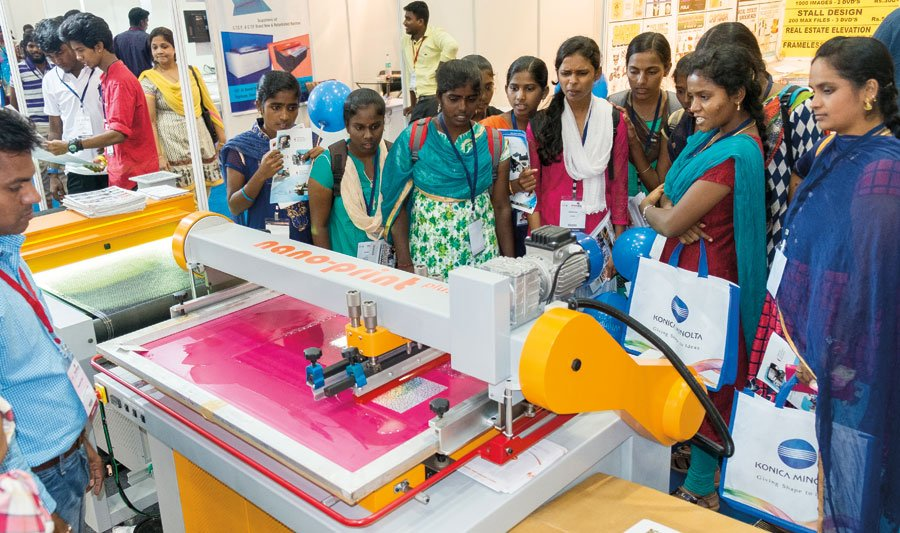Thermography is an innovative printing process with several benefits. Thermography printing is more efficient in terms of ink and paper usage, and it also yields more exact and consistent prints. Furthermore, thermal prints are more durable and less likely to smudge or fade, making them great for busy areas. Those looking to reduce their printing expenses without sacrificing quality may find this new technology usage. Businesses that invest in this revolutionary technology will be at the forefront of a fascinating trend that will revolutionize the printing industry.
Maximizing the Benefits of Thermographic Printing
Thermography printing uses heat-sensitive toner to produce three-dimensional, embossed pictures on paper. Many businesses could benefit greatly from implementing this technology. Thermographic printing can be used to create a wide variety of products, such as:
- Thermography printing allows you to make business cards with eye-catching text or artwork. If you print your business cards in such a way, they may stand out from the crowd.
- Thermography printing allows for the creation of letterheads with striking text or images. To make your letterhead look more professional, consider using this printing method.
- Thermographed envelopes add a professional touch to every mailing. By employing this method of printing, you can rest assured that your correspondence will be opened and read.
- Brochures printed with thermography can have standout text or imagery. If you use this printing method, your brochures will be more interesting and functional.
- When used for printing wedding invitations, thermography may produce stunning results. Inviting people to your party has never been easier.
- Thermography printing can also be used to make beautiful portraits of loved ones for persons with visual impairments or who are blind.
Numerous Methods Exist For Getting a Company Off the Ground
There are many commercial printers from which to choose. Some trade printers may produce a wide range of goods, while others may specialize in just a few. There are two types of commercial printers: those that put quality first and those that cut corners. Choosing a commercial printer depends on your specific requirements and budget. If you need professional-grade printing, you should work with a trade printing company that places a premium on quality. Find a trade printer that offers competitive pricing if you’re on a limited budget. Think about the company’s reputation for customer service as well. Listen to what other people have to say before making a call.
Key Differences between a Trade Printer and a Contract Printer
Depending on your needs, you may find it more convenient to hire a trade printer instead of a contract printer. Commercial printers typically provide lower prices and a wider selection of products and services. They might be able to print, bind, and deliver your documents, among other things. As an added bonus, trade printers typically have a faster turnaround time than contract printers. Knowing that our team understands the importance of meeting deadlines, you can be assured that yours won’t be the only project that is delayed. Last but not least, trade printers sometimes have lower order minimums than contract printers, which are often more expensive. That means it won’t set you back any extra to print a few pages.
Components Unique to Commercial Printers
There are four main parts to most commercial printers: the input tray, the output tray, the print engine, and the controller. The controller is the nerve center of the whole process. It controls the printing process from start to finish and relays information to the printing mechanism. What we call the printer’s “print engine” refers to the mechanism responsible for transferring ink to paper. One of its many moving parts is a set of rollers that moves ink from a reservoir to the print surface. In order to feed the paper into the printer, it must first be placed in a tray. After printing, the document is transferred to the output tray. A hole puncher or stapler are two examples of features that may be engaged or deleted on some office printer models. At its heart, a commercial printer is a simple piece of equipment capable of producing high-quality prints in a short amount of time.
What Function Does a Printer Serve in an Office Setting?
Commercial printers aim to sell their wares to a large audience. Commercial printers range from small desktop devices to huge industrial machines. However, there are some essential features that every office printer should have. The print head, ink delivery system, and paper feed mechanism are the three main parts of a printer. To put it simply, the “print head” is the part of the printer that actually puts ink on paper or other mediums. That part of a printer called the “media feeding mechanism” is responsible for delivering sheets of paper or other media to the printer’s input tray. Ink is provided to the print head by the ink delivery system. These three components form the backbone of any commercial printing company. Commercial printers are machines that can print both text and images on a wide range of paper sizes and types.
Thermography Printer Internals
A commercial printer is a machine used for the mass production of printed materials like posters, brochures, and greeting cards. Several distinct types of commercial printers exist, each optimized for a unique set of needs. Commercial printers come in wide varieties, and one is the thermography printer. These printers use heat to make images leap off the page. Before taking images, the powdered material is placed on the paper. The powder stays where the imprint will be. After that, the paper is heated and circulated in an enclosed environment. The heat dissolves the powder, revealing the hidden picture. Once the paper has cooled, the image will be permanently set. Thermography printers are commonly used to make business cards, invitations, and other printed goods with a polished appearance.
Innovations in Commercial Printing
Making money out of printing has been around for quite some time. Since the invention of the printing press by Johannes Gutenberg in the 15th century, printing has been a lucrative business. Commercial printers have been creating books, newspapers, and other printed items for decades. However, new printing methods like lithography and rotary printing were put into use at the turn of the nineteenth century. By the turn of the nineteenth century, commercial printing, which made use of these innovative methods, had become a renowned profession.
The business world still places a premium on commercial printing. Marketing materials and product packaging are only two examples of what commercial printers generate. Thanks to advancements in digital printing, commercial printers can now generate high-quality prints at lower costs than ever before. Any printed material, from business cards to billboard ads, can be produced on a commercial printer. You can learn more at www.teamconceptprinting.com.




